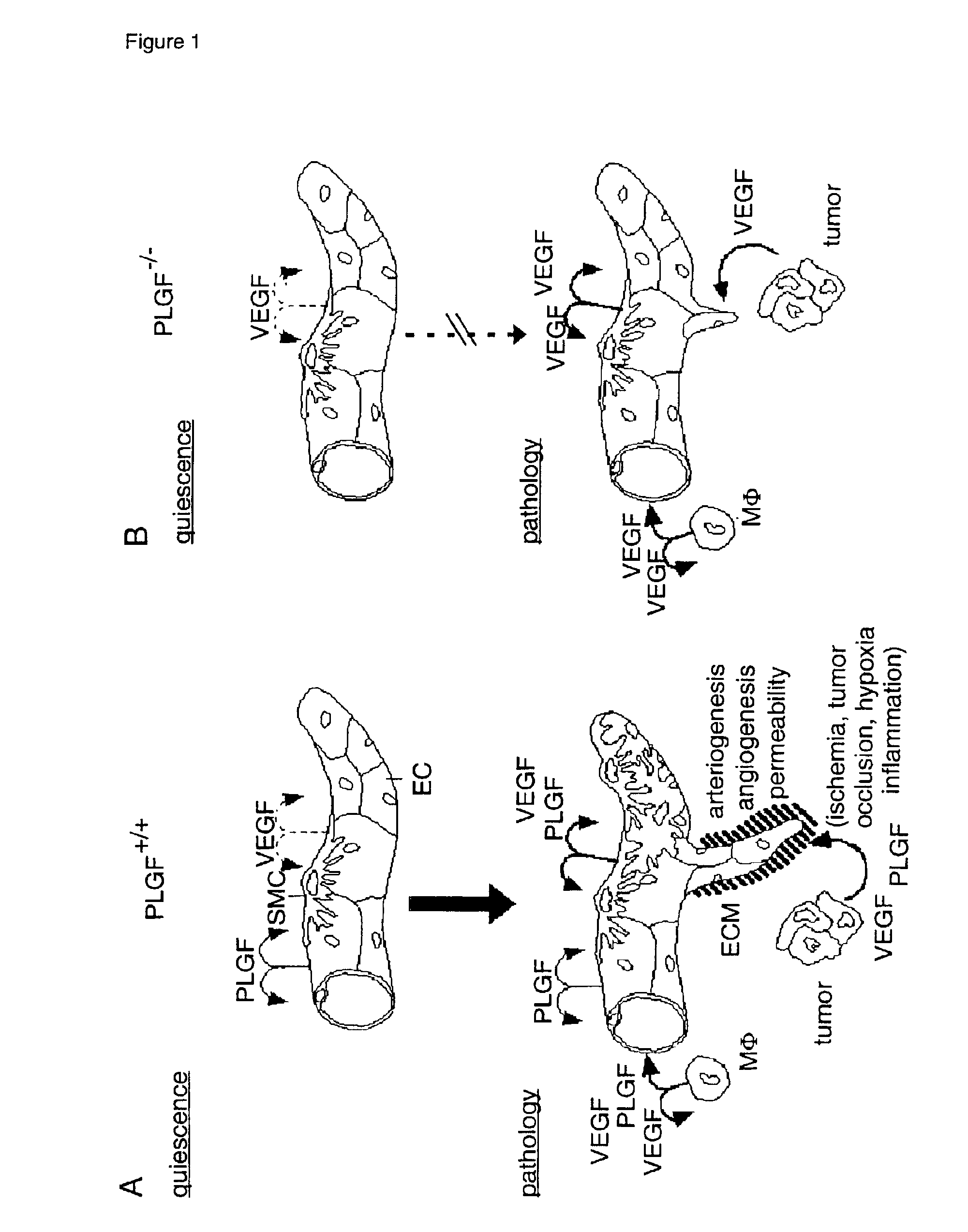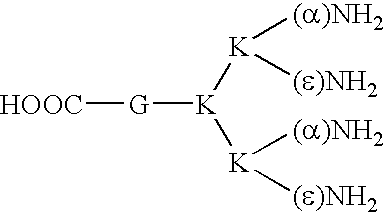Inhibitors of placental growth factor for the treatment of pathological angiogenesis, pathological arteriogenesis, inflammation, tumor formation and/or vascular leakage
a growth factor and inhibitory technology, applied in the field of pathological angiogenesis and arteriogenesis, can solve the problems of undetermined molecular players, uncontrollable excess arteriogenesis, promising and disappointing, etc., and achieve the effect of blocking activity and/or synthesis and inhibiting signal transduction
- Summary
- Abstract
- Description
- Claims
- Application Information
AI Technical Summary
Benefits of technology
Problems solved by technology
Method used
Image
Examples
examples
1. Impaired Pathological Angiogenesis in PIGF− / − Mice
[0057]In several pathological conditions, in particular when associated with increased VEGF expression, formation of new endothelial-lined channels (angiogenesis) was significantly impaired in PIGF− / − mice. Growth and angiogenesis of embryonic stem (ES) cell-derived tumors, known to be mediated by VEGF (N. Ferrara et al., 1996, Nature 380, 439-442), was also dependent on PIGF. Indeed, PIGF+ / + ES cell-derived tumors obtained within four weeks after subcutaneous inoculation in nu / nu PIGF+ / + mice, weighed 4±1 g (n=8) and appeared hemorrhagic and bled profusely (seven of eight tumors). In contrast, PIGF− / − tumors in nu / nu PIGF− / − hosts only weighed 1.0±0.3 g (n=8) and were homogeneously white with minimal bleeding (five of seven tumors). Growth and vascularization in PIGF− / − tumors were reduced to the same degree as in VEGF− / − tumors. PIGF+ / + and PIGF− / − tumors contained comparable vascular densities of endothelial cords and capillari...
PUM
| Property | Measurement | Unit |
|---|---|---|
| diameter | aaaaa | aaaaa |
| temperature | aaaaa | aaaaa |
| pH | aaaaa | aaaaa |
Abstract
Description
Claims
Application Information
 Login to View More
Login to View More - R&D
- Intellectual Property
- Life Sciences
- Materials
- Tech Scout
- Unparalleled Data Quality
- Higher Quality Content
- 60% Fewer Hallucinations
Browse by: Latest US Patents, China's latest patents, Technical Efficacy Thesaurus, Application Domain, Technology Topic, Popular Technical Reports.
© 2025 PatSnap. All rights reserved.Legal|Privacy policy|Modern Slavery Act Transparency Statement|Sitemap|About US| Contact US: help@patsnap.com


